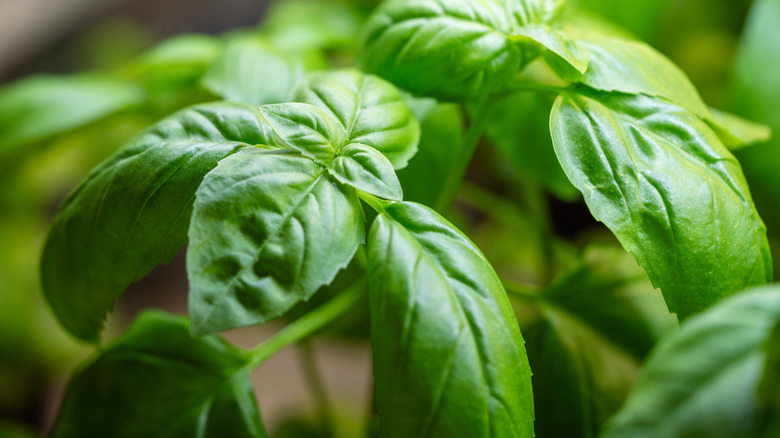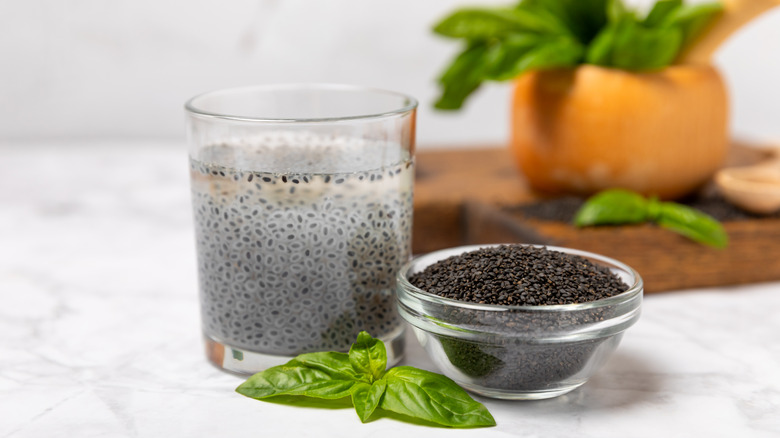How To Harvest Seeds From Your Basil To Have An Endless Supply
Basil (Ocimum basilicum) is one of the most commonly used herbs in the kitchen, especially the fresh leaves. But, as an annual plant, they only last for one season. Instead of buying basil year after year, you could plant your own using your harvest of seeds from last year's basil plant. It's an herb that you should grow from seeds instead of seedlings for a better harvest anyway. The best part is, the process is relatively simple, so even the most inexperienced gardeners won't have trouble reaping the benefits of an endless supply of basil. Not to mention, if you grow your basil plant indoors, you can continue to have fresh basil leaves all year round.
To begin with, you will want to wait until your current plant has gone to seed. That means that it has produced flowers that have started to dry out. You can either clip off the flower heads and let them finish drying out for a few days in a protected, dry environment, or wait until the flowers have turned brown and brittle to clip them. There are plenty of tiny, black seeds hiding within the dry flower heads; all you need to do is crush them out. You can use a colander to catch the seeds, making sure you don't lose any in the process.
How to store and plant your newly harvested basil seeds
After you have harvested the seeds from your basil plant, you will need to make sure they stay viable. Secure them in a bag, envelope, or glass jar and select a location that is dry and dark, which is the best place to store your seeds. As long as they stay dry and out of light, your seeds could remain viable for up to five years.
When you are ready to grow your new basil plants for a bountiful harvest, you can choose between direct seeding and seeding indoors. If you do choose direct seeding, however, you will be limited to harvesting the leaves only when the weather permits (basil is hardy in USDA zones 3 to 11). Plant seeds after the last frost at least 6 inches apart when using the direct seeding method. For indoor planting, place the seeds in well-draining soil full of organic matter about ⅛ inch deep. Water frequently enough to maintain moist (but not soggy) soil. Seeds grow best at temperatures between 75 and 85 degrees Fahrenheit in full sun or under grow lights.

